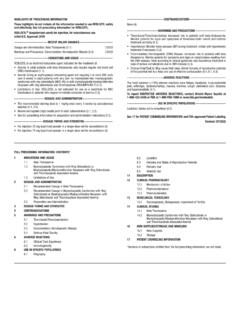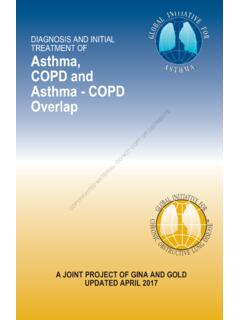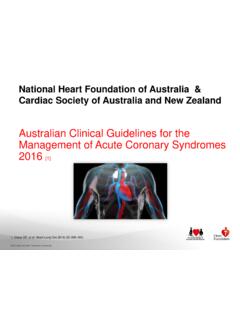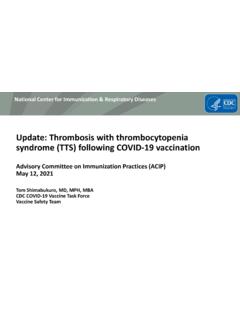Transcription of Outbreak Case Definitions - Centers for Disease Control ...
1 Outbreak case Definitions Purpose of a case definition : Development of a clear case definition is critical to effective investigation of an Outbreak . Use of a common case definition allows for standardization of the cases of interest both within an ongoing Outbreak investigation and possibly between Outbreak investigations that differ over time or geographic location. Note: Additional agents, such as Arcanobacterium haemolyticus, Neisseria meningitidis, and Staphylococcus aureus, may cause respiratory syndromes but have not been associated with outbreaks. Developing Outbreak case Definitions : A case definition includes criteria for person, place, time, and clinical features. These should be specific to the Outbreak under investigation. "Person" describes key characteristics the patients share in common. For example, this description may include: age, sex, race, occupation and exclusion criteria ( , persons with no history of X Disease ).
2 "Place" typically describes a specific geographic location (state, county) or facility associated with the Outbreak (X nursing home, Y high school). "Time" is used to delineate a period of time associated with illness onset for the cases under investigation. Limiting the time period enables exclusion of similar illnesses which are unrelated to the Outbreak of interest. Initially, "clinical features" should be simple and objective ( , sudden onset of fever and cough). The clinical criteria may later be characterized by the presence of specific laboratory findings. 1 Table: Common components and examples of an Outbreak case definition Element* Descriptive features Examples Person Age group children under the age of 5 years Sex males Occupation health care workers at hospital X Exclusion criteria persons with no previous history of chronic cough or asthma Race Place Geographic location resident of Y county or state Facility living in X nursing home ; student at A high school Time Illness onset onset of illness between May 4 and August 31, 2007 Clinical features Pneumonia clinical or radiographically confirmed pneumonia shortness of breath and fever Laboratory criteria Cultures; serology Pneumococcus isolated from blood.
3 Rapid influenza test positive *Please note components of an Outbreak case definition vary for each Outbreak . Examples of a case definition : "Student attending X High School who has onset of fever and cough between January 4 and 24, 2007." A resident of, or visitor to, Rapid City, South Dakota who was diagnosed by a physician, either clinically or radiographically, with community-acquired pneumonia (CAP) with symptom onset after May 1, 2005 and who had laboratory confirmation of Legionnaires Disease by culture of Legionella, by urinary antigen test for Legionella pneumophila serogroup 1 (Lp1), by a four-fold or greater rise in serum antibody titer to Lp1, or detection of specific Legionella antigen by direct fluorescent antibody staining. case Definitions are often further categorized by the degree of certainty regarding the diagnosis as "suspected", "probable", or "confirmed".
4 Further examples: A clinical case was defined as an acute cough illness lasting >2 weeks with onset during September 2004--February 2005 and without other apparent cause in a person living in the Amish community in Kent County. A confirmed case was defined as a clinical case of pertussis that 1) was laboratory confirmed by polymerase chain reaction (PCR) for Bordetella pertussis DNA or 2) had a direct epidemiologic link to a laboratory-confirmed case through a common household residence. All other clinical cases were considered probable. References: 1. Gregg, Field Epidemiology. New York: Oxford University Press, 2002. 2
















